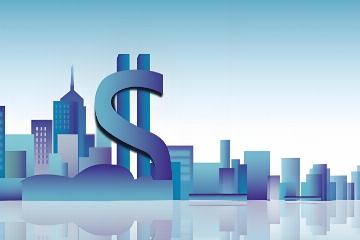US Economic Data Fuels Market Volatility
Advertisements
On Thursday, January 16, the release of important economic data in the United States stirred significant interest among market participantsThe retail sales figures for December and the weekly initial claims for unemployment insurance provided a deeper insight into the current economic climate and hinted at future monetary policy directions from the Federal ReserveThese statistics act as barometers reflecting consumer spending habits and labor market conditions, essential factors in shaping the broader economic landscape.
Following the release of the December retail sales data, the market reacted swiftlyAlthough retail sales increased by 0.4% for the month—slightly below the anticipated growth—this figure still indicated robust consumer demandThe U.SDollar Index dipped momentarily by over 10 points, landing at 109.33, while gold prices surged, reaching $2711.61 per ounce after gaining $4 in a short span
Advertisements
Meanwhile, U.Sstock index futures exhibited slight fluctuations as investors adopted a cautious stanceObserving U.STreasury yields, the ten-year bond yield rose by 2.3 basis points to reach 4.678%, while the two-year yield increased by 3.6 basis points to 4.297%. This disparity in yields highlighted the emerging divergence in market expectations surrounding economic growth and the trajectory of the Fed's monetary policy.
Despite the retail sales growth being below expectations, the performance was commendable compared to the previous month's revised increase of 0.8%. This performance underscores strong consumer activity that remains resilient amidst shifting economic dynamicsAccording to a report from the U.SDepartment of Commerce, core retail sales, which exclude automobiles, gasoline, building materials, and food services, rose by 0.7%. This key component significantly contributed to December's retail sales growth, demonstrating that consumers are maintaining their spending patterns in essential categories, largely unaffected by seasonal fluctuations.
Moreover, in a high-interest rate environment, the stability of the U.S
Advertisements
labor market, along with an improvement in household finances, has supported the increase in consumer expendituresThis development illustrates the resilience of the American economy and leads analysts to conclude that the Federal Reserve may opt for only two interest rate cuts throughout the year, a significant reduction from the more aggressive expectations seen in September.
The unemployment claims data released simultaneously further corroborated the stable health of the American labor marketFor the week ending January 11, the number of initial jobless claims rose to 217,000, exceeding the forecast of 210,000. However, this increase was marginal, with the four-week moving average decreasing to 212,750. This trend signals a steady labor market with sustained competition among job seekers, maintaining their advantage.
While the slight uptick in jobless claims may have sparked market speculation, the stable unemployment rate and the declining continuation claims indicate no substantial change in the overall health of the labor market
Advertisements
Analysts have noted that this stability implies that the U.Seconomy is positioned to withstand external pressures, with rising consumer spending continuing to act as a critical driver of economic expansion.
Taking these insights into consideration, the market anticipates that the Federal Reserve will adopt a more cautious approach regarding future interest rate cutsThe favorable retail sales data suggests that, alongside the easing inflation, expectations for rate reductions are gradually formingWell-regarded analysts have stated that the Fed's decisions will closely align with economic growth trajectories and inflationary pressuresAs the U.Seconomy experiences a gradual moderation in growth, market expectations have led to predictions of a more measured approach from the Fed, to avoid the risks associated with premature easing that could lead to overheating the economy.
Currently, there are no strong signals of an economic slowdown within the U.S., with solid consumer spending and a stable labor market underpinning short-term market stability
- US Indices Extend Gains for Fourth Day
- Localized Digital Trade Innovations
- Navigating Europe's Persistent Industrial Slump
- Eurozone Economy: Policy and Currency in Focus
- EU Balances User Rights, Tech Innovation
If consumer confidence strengthens further over the coming months and the employment landscape remains robust, it is plausible that the pace of cuts may be delayed until the second half of the year, with possibly just two reductions anticipated—a relatively tempered expectation in the market.
In sum, the trajectory of the U.Seconomy is not without its challenges, facing uncertainties stemming from global dynamicsHowever, markets remain generally optimistic about its growth prospects in the near termFactors such as escalating geopolitical tensions, intricate global trade relationships, and the rise of emerging economies add layers of complexity to the outlook for the U.SeconomyNonetheless, recent economic data and market performances highlight a strong domestic consumption sector, reasonable corporate profitability, and a relatively steady employment marketThese positive elements serve as essential pillars supporting market confidence.
In this context, investors are urged to maintain high levels of vigilance and insight, keeping a close watch on the Federal Reserve's monetary policy developments

Your email address will not be published.Required fields are marked *
Join 70,000 subscribers!
By signing up, you agree to our Privacy Policy